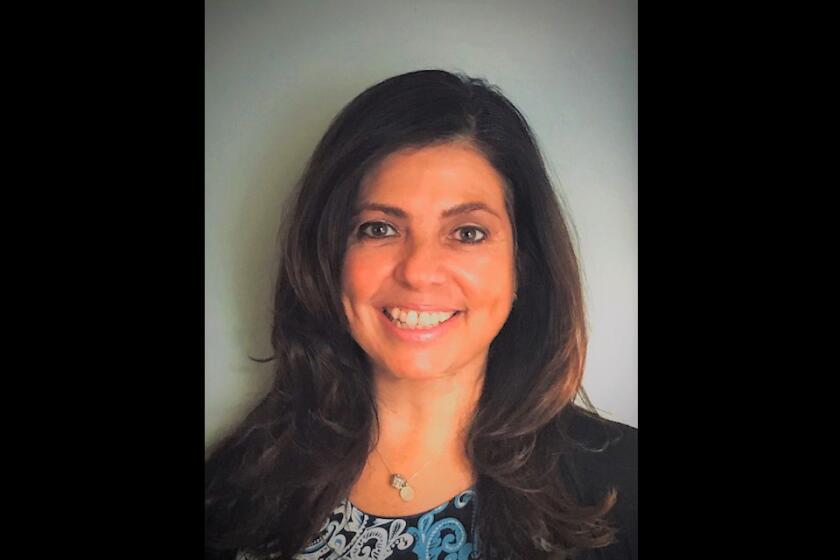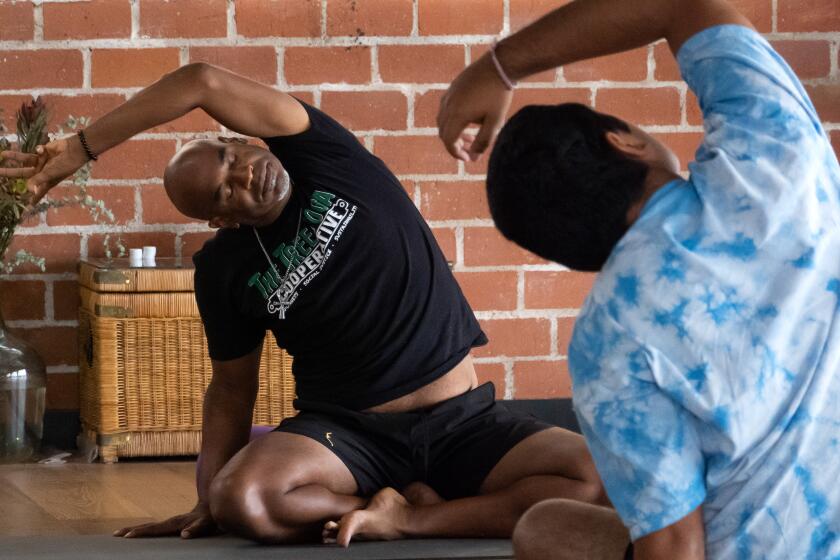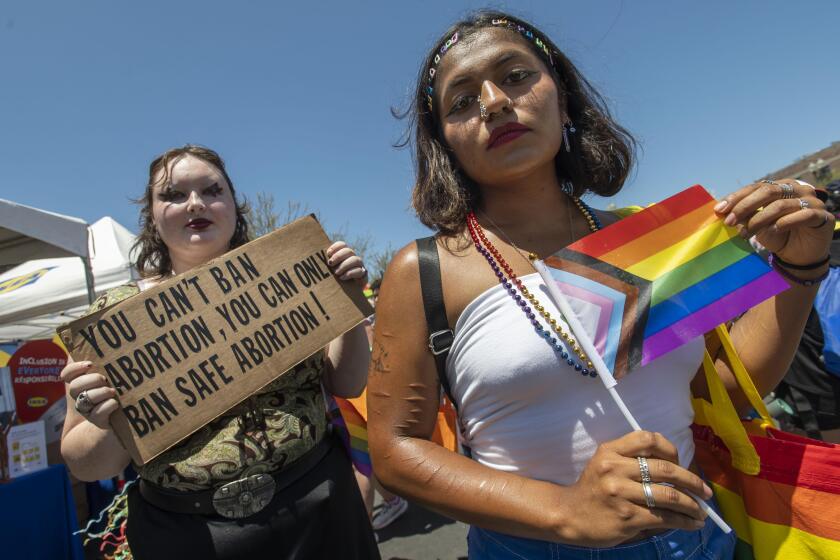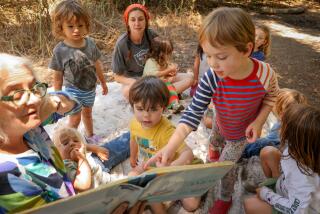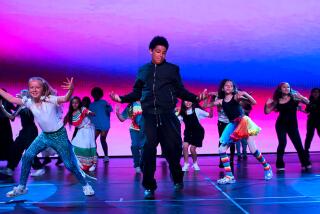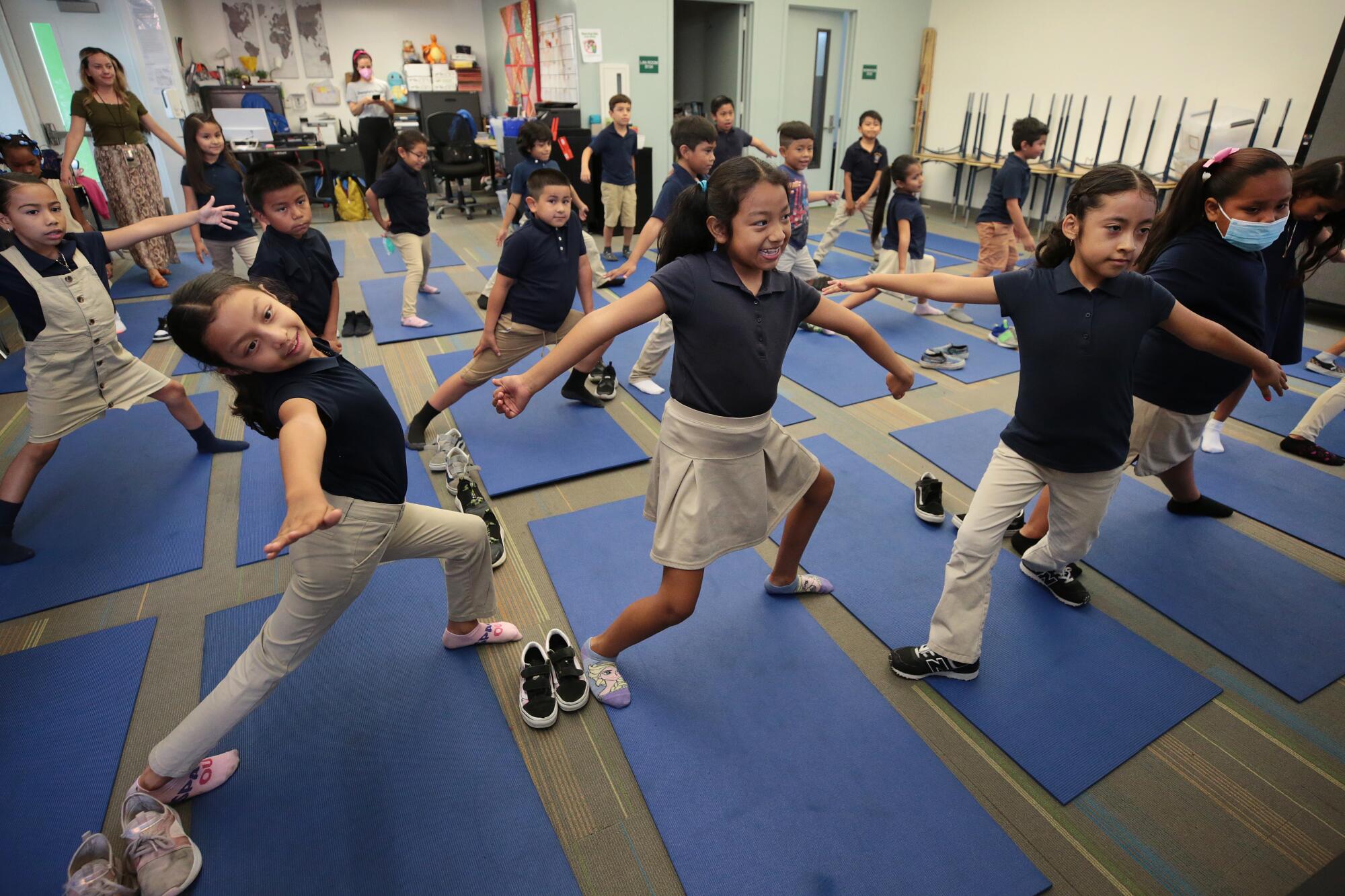
- Share via
Leah Rose Gallegos paced the library at Accelerated Charter Elementary School. In 15 minutes, the room would be full of fifth-graders in sneakers and school uniforms, arms raised overhead, dutifully following her instructions to breathe, stretch and look inward.
But first it was time for a consecration of sorts.
Gallegos stepped around the yoga mats spread on the floor, leaving drops of rosemary and lavender oil near the desks pushed against the wall and bookshelves stuffed with textbooks, board games and a row of mesh bug habitats housing newly hatched moths.
“It’s aromatherapy,” explained Gallegos, as the scent wafted around the room. “It’s one of the tricks that we do. When they walk in, they can feel like they’re somewhere else.”
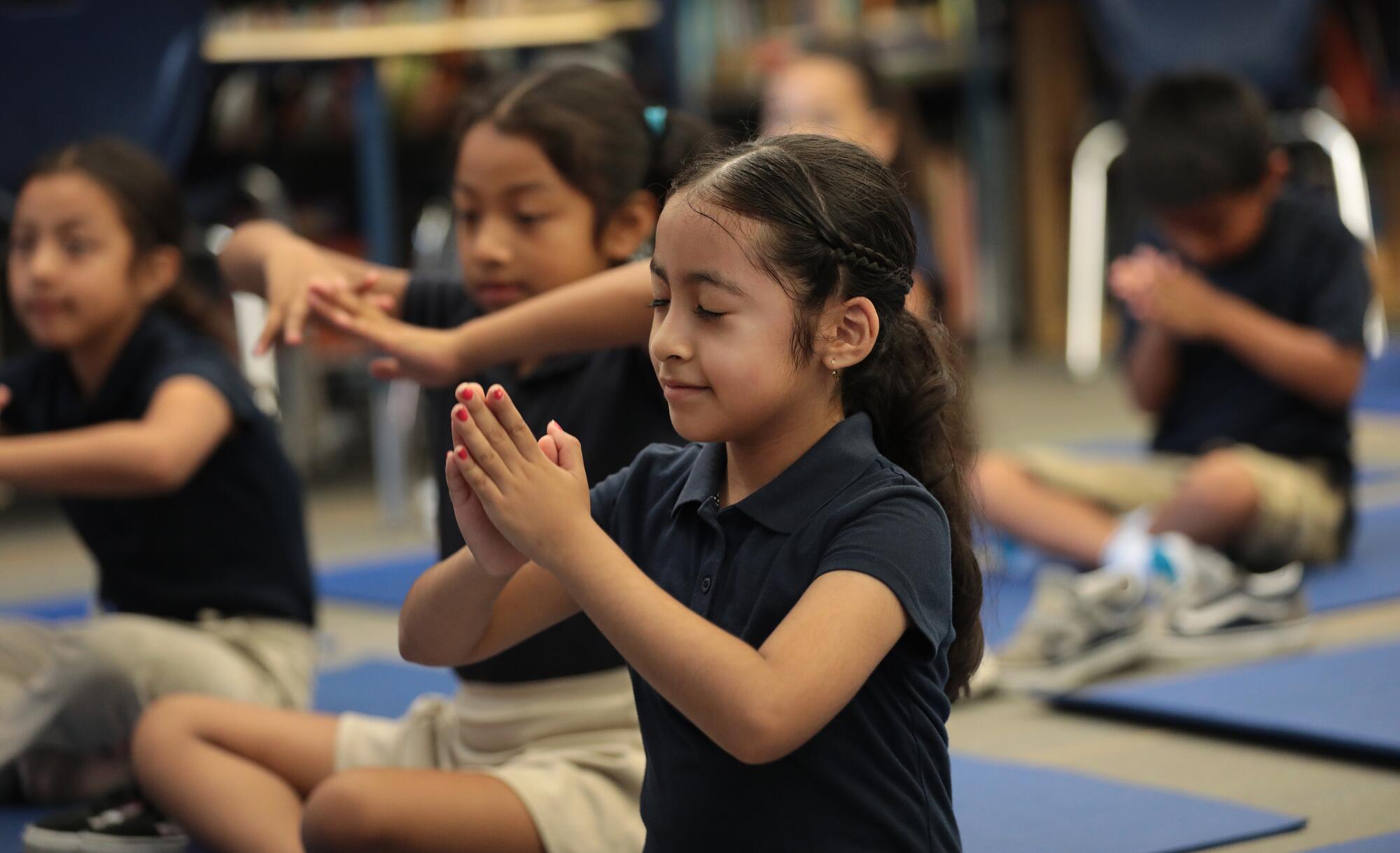
The choice of rosemary was a deliberate one, she said; the resilient, sun-loving herb grows all over Los Angeles. In a later class, she will bring in a sprig of the live herb so kids will recognize it. She’ll teach them how to transfer its fragrance to their fingertips with just a gentle touch, so they don’t have to wait until her next visit to experience that sense of calm.
This is what her mindfulness class is meant to do, she said: “The goal is to give them as many tools as possible to help themselves.”
Gallegos — who founded People’s Yoga with Lauren Quan-Madrid in 2014 in East Los Angeles — was at Accelerated Charter for the first mindfulness class of the 2022-23 school year, a monthly offering for students in transitional kindergarten through sixth grade.
Gallegos and fellow instructors from People’s Yoga teach children yoga postures, deep breathing and meditation techniques. In a world that can feel scary and out of control — especially lately — the class aims to teach children how to create a safe place of their own.
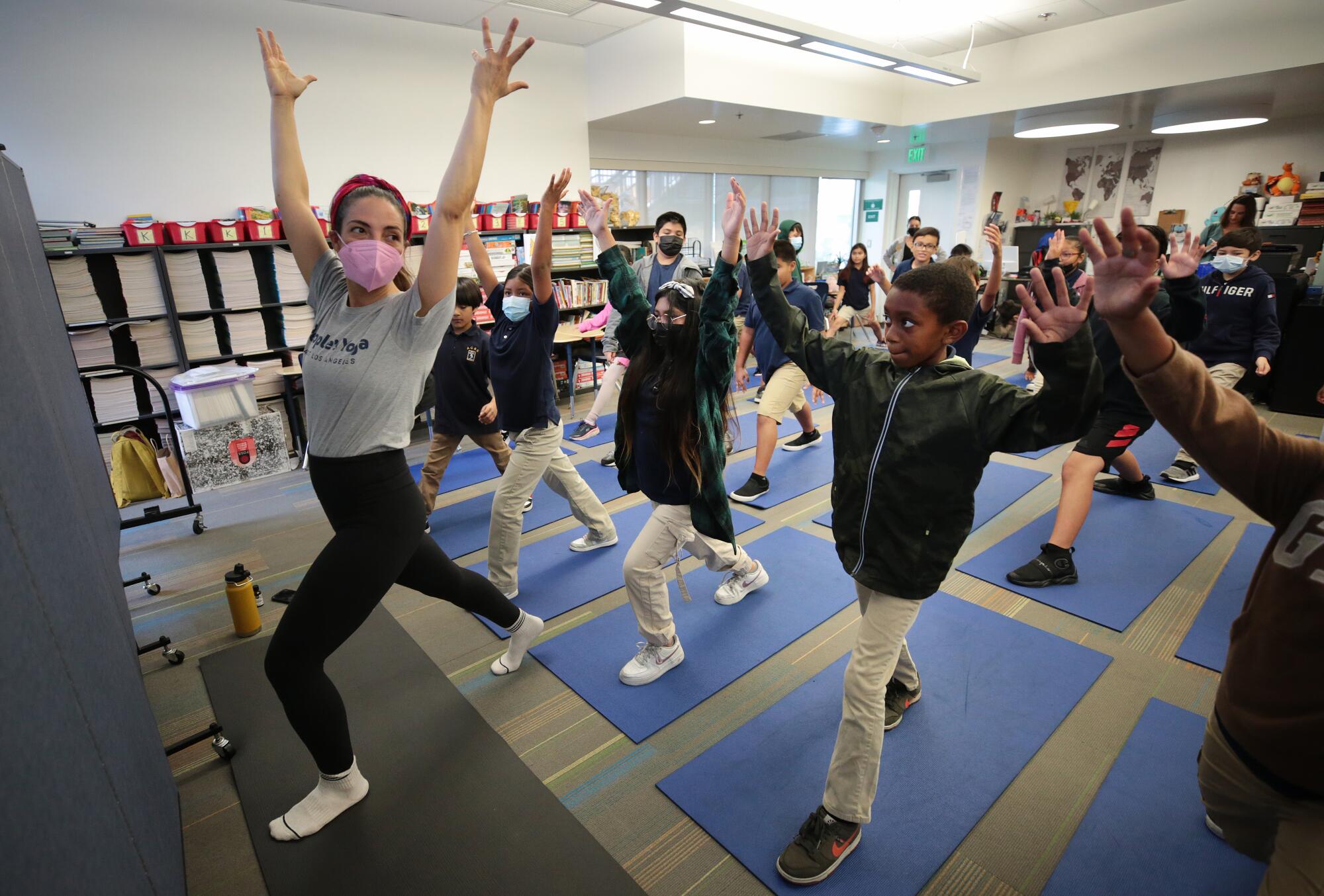
“I don’t tell them, ‘It’s going to make you feel good.’ I say, ‘See how you feel,’” Gallegos said. “I really want them to reclaim the power of their own body, and of managing their own emotions.”
How To Save A Life
Pandemic stress, traumatic events and economic uncertainty have upended our world. This series aims to make the cascade of threats to your mental health a little easier to manage.
The stresses of the last two years have prompted a nationwide crisis in children’s mental health that hasn’t spared Accelerated Charter, a short walk from Exposition Park and USC. The school’s roughly 500 students in transitional kindergarten through sixth grade have collectively mourned family members lost to COVID-19 and watched parents who are essential workers risk exposure to the virus, while navigating the chaos, uncertainty and isolation of online school and pandemic life.
No monthly meetup alone can heal those hurts. But since the mindfulness class started, teachers and administrators at Accelerated Charter have noticed a subtle shift in the way students respond to stress and to the strength of their own emotions.
“At the beginning, it was, ‘Yoga? What is that? What’s going on?’” said Nestor Alas, the school’s dean of culture. “Because they have this perception, this mentality, about yoga being like, ‘Oh, that is for other types of people. That is not for us.’”
A year later, Alas said, “kids are using the strategies in yoga to deal with stuff outside the classroom — any problem, any issue.”
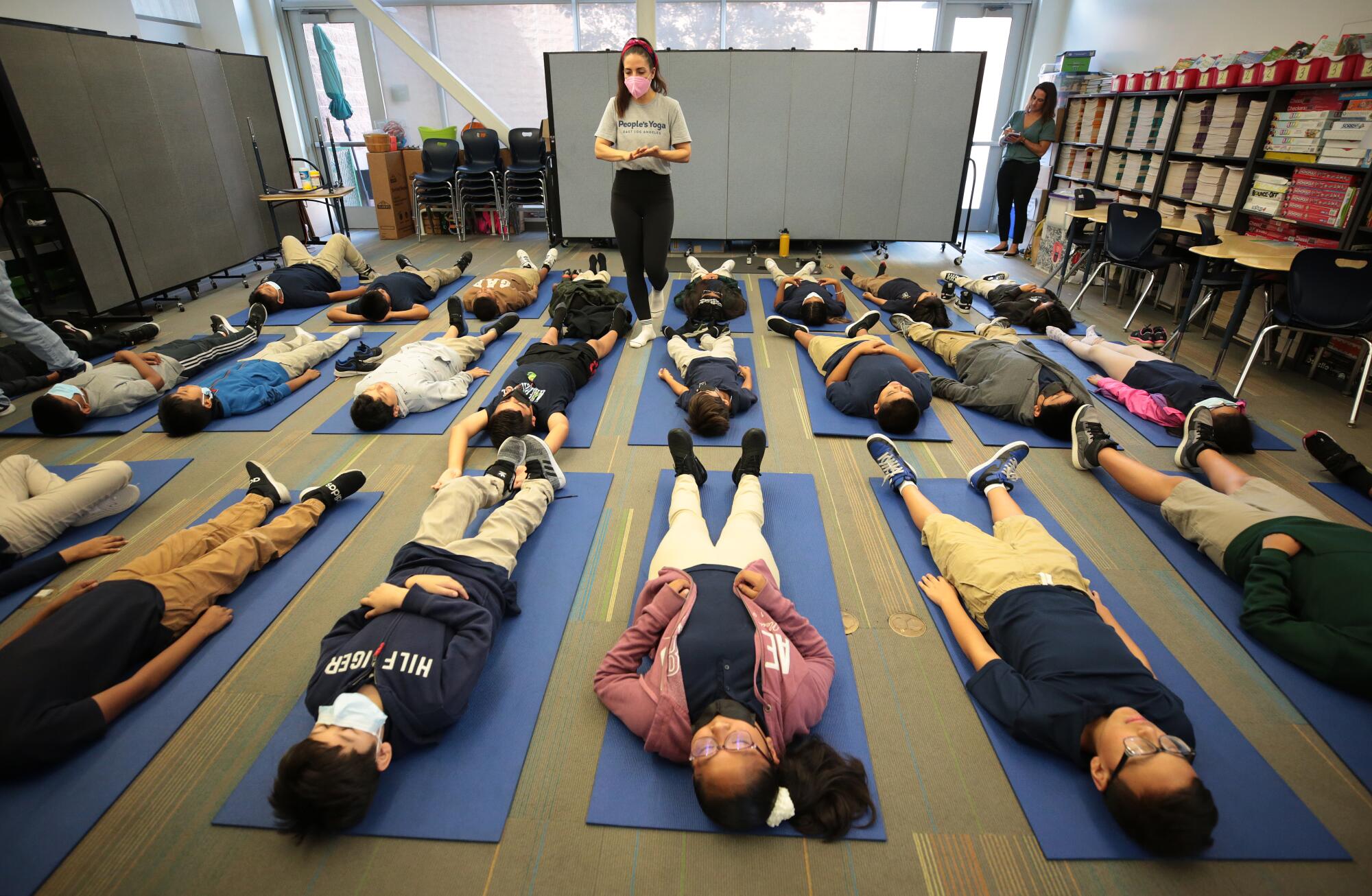
Earlier that week, Alas found a kindergarten student in tears over a lost lunchbox.
“What do you think we can do now?” Alas asked.
The boy looked at him with a tear-streaked face. “Breathe in,” he replied.
Together they took three deep breaths — in through the nose, out through the mouth, just like the child had learned. “I feel better,” he said when they were done, then returned to the hunt for his lunchbox.
When Accelerated Charter’s South-Central campus fully reopened for in-person learning for the summer 2021 program, Principal Karin Figueroa could see right away that her students were going to need extra support.
COVID-19, she said, “was like a new layer of trauma” on top of what kids were already dealing with.
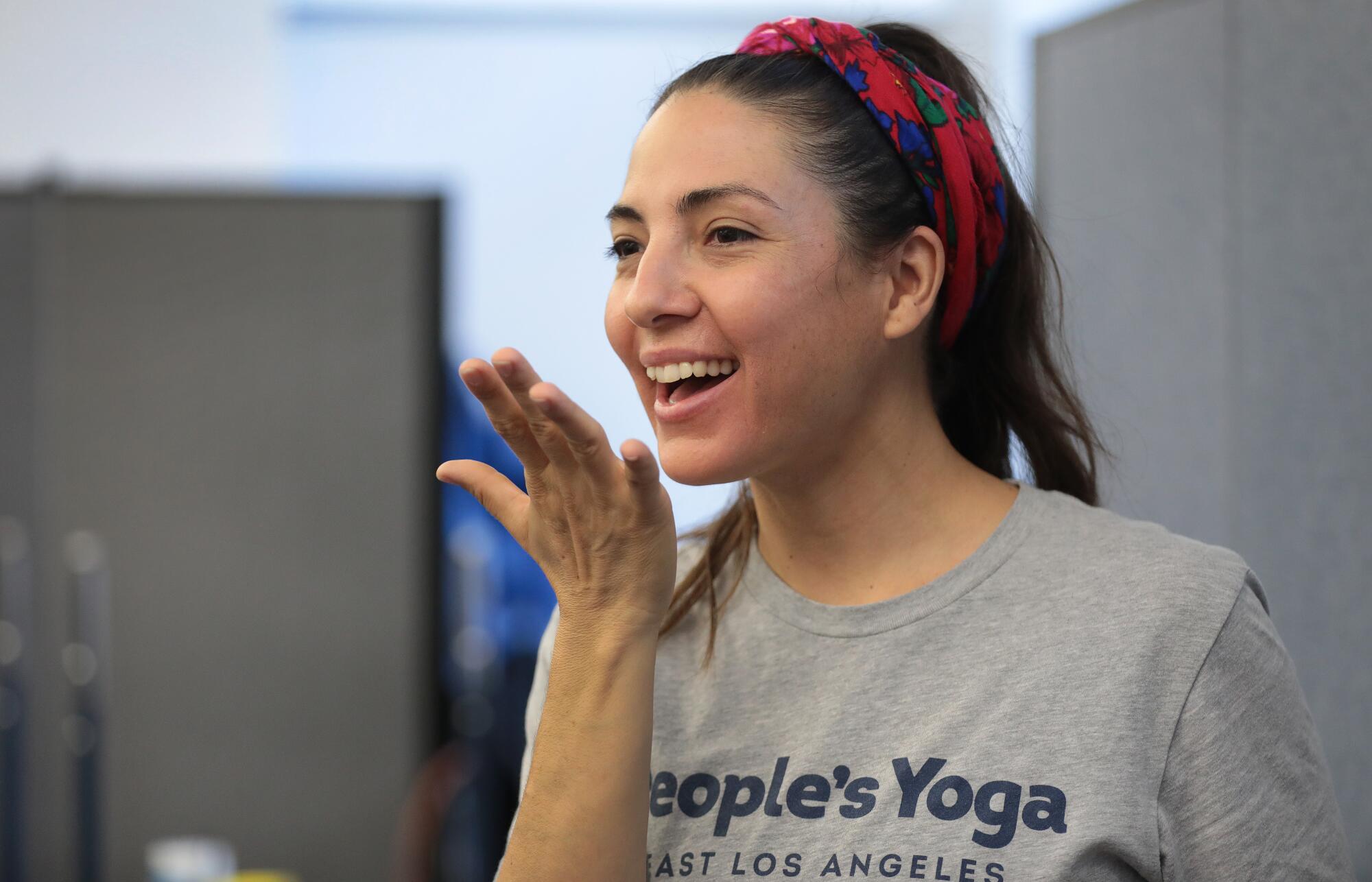
Nationwide, pandemic-fueled disruptions to education have undermined years of progress in elementary math and reading skills. Those losses have been most acute in communities of color and those with high rates of poverty.
The vast majority of students at Accelerated Charter identify as Latino, and more than 90% of the school’s families qualified for free or reduced-priced meals prior to the pandemic, Figueroa said.
Figueroa hired a counselor and a social worker. She also wanted to go a step further.
“With younger children, they’re not able to verbalize [stress], but they will display it in different ways, whether it be a push or a yell. That’s the only way that they know how to express it,” she said. “So our job is to equip them with the words, techniques and strategies that they can tap into to cope with whatever it is that they’re feeling.”
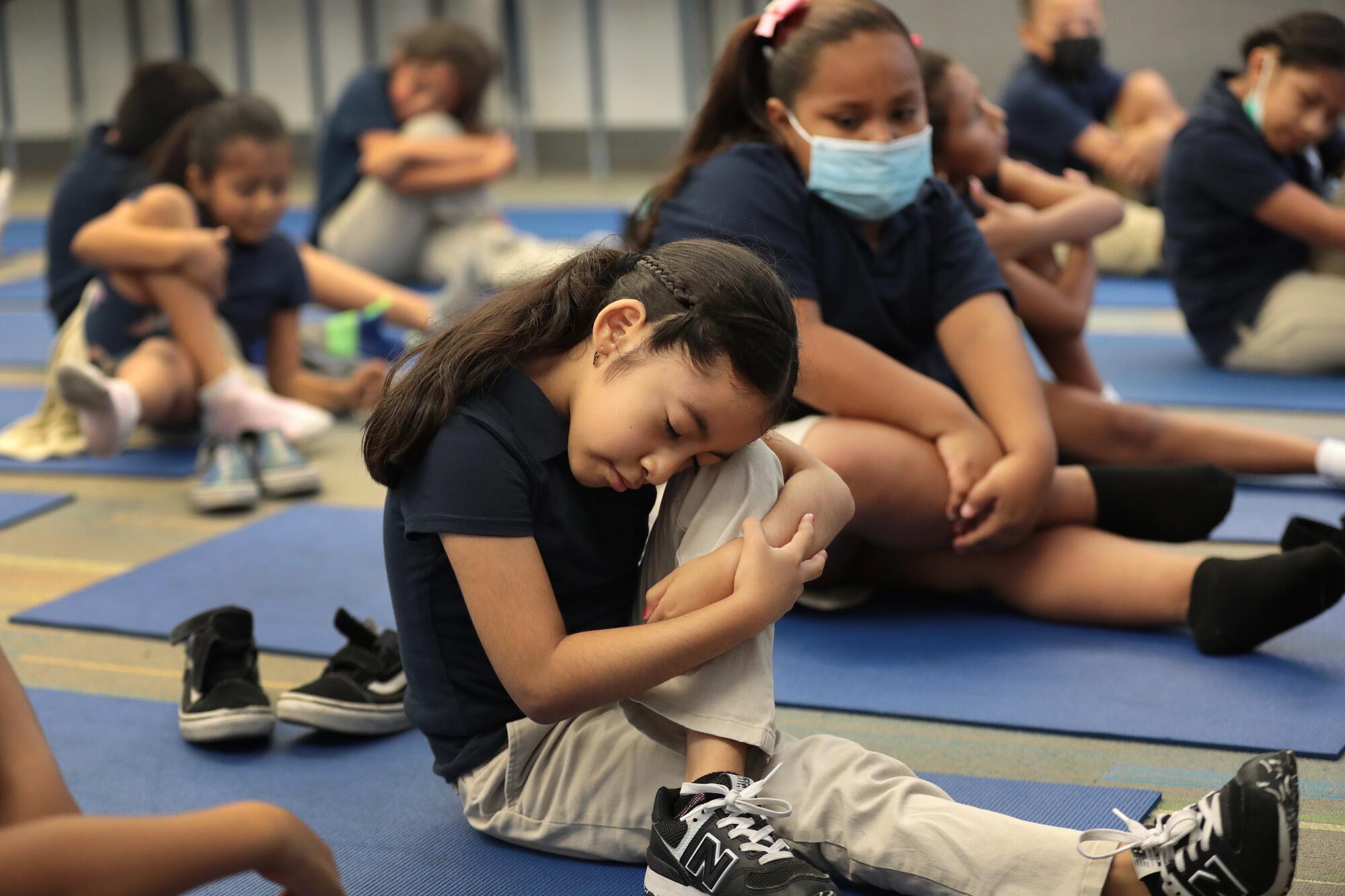
She reached out to People’s Yoga. Before the pandemic, the studio offered family classes, occasional one-off workshops for elementary schools and ongoing programs at high schools in LAUSD and elsewhere. As the slow return to in-person activities began, Gallegos felt a strong urge to expand the studio’s offerings to young people.
“I felt this huge pull to do something that would support children, especially during this time when everything is crashing down on all of us,” she said.
A psychologist and expert in trauma urges professionals and parents to take a holistic approach to healing our children.
The students at Accelerated Charter were hardly alone in their struggles. One analysis of 80,000 young people worldwide found that symptoms of depression and anxiety doubled during the first year of the pandemic, with 25% of youth reporting signs of depression and 20% experiencing anxiety symptoms.
It’s a challenge that the U.S. — and California in particular — was ill-prepared to meet.
Even prior to the pandemic, mental health was the leading cause of poor life outcomes in young people, according to a public health advisory the U.S. Surgeon General issued in December.
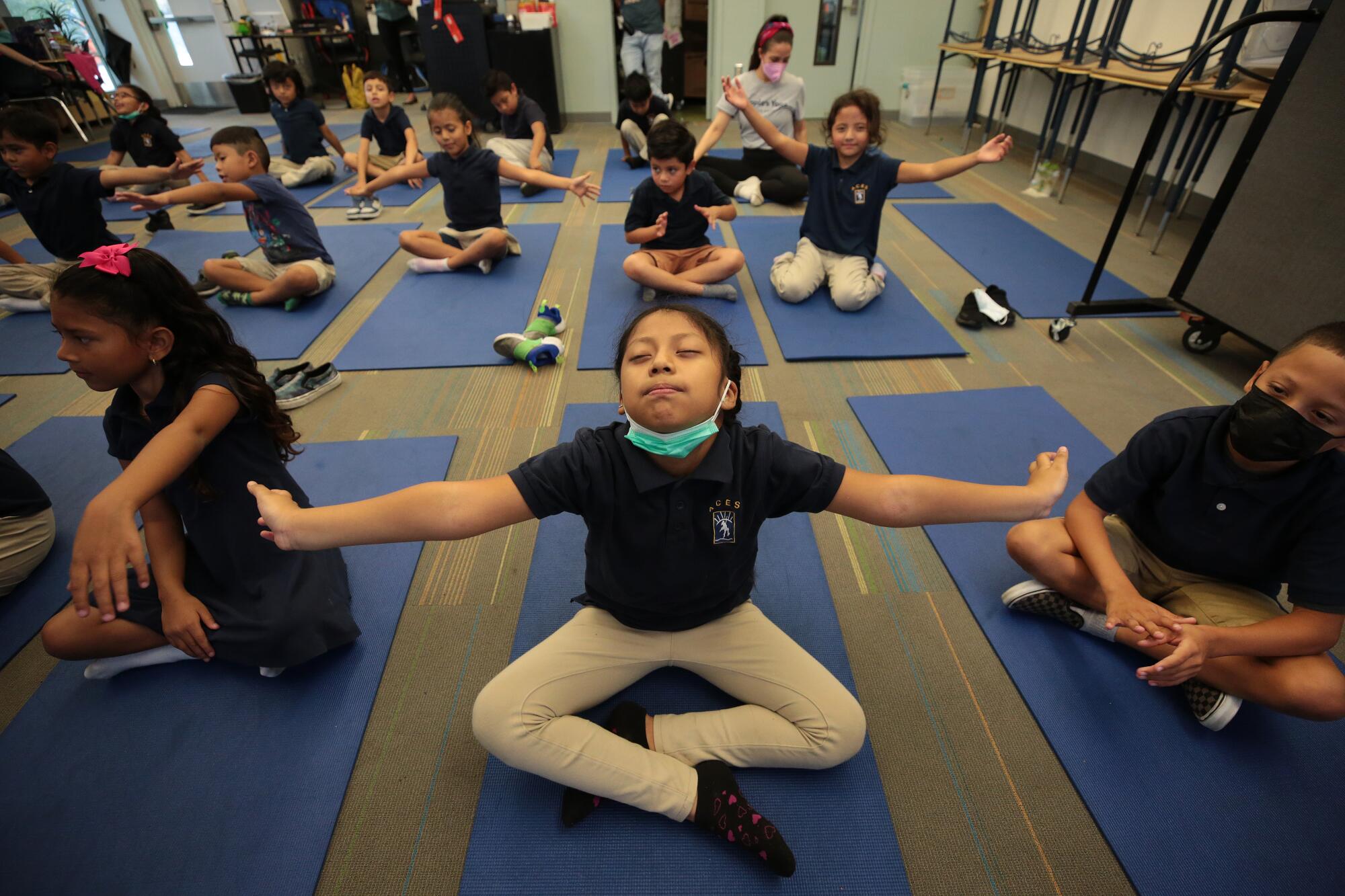
Of the millions of children experiencing a treatable mental or emotional health condition, one study found, roughly half did not receive adequate care. California ranks in the bottom five states in
its ratio of school counselors to students. A 2020 statewide audit found that 97% of the state’s school districts failed to employ the recommended number of mental health professionals, and 25% had no such staff at all.
With a yawning gap between students’ emotional and mental health needs and available staff, many schools in California and beyond have embraced low-cost programs to bolster kids’ resilience.
Several studies have found that regular yoga instruction in the classroom helps improve students’ anxiety and emotional regulation. By 2015, roughly 1,000 schools across the country had implemented some sort of yoga program on campus.
But it hasn’t been universally embraced: Alabama law banned yoga in schools until 2021 and still prohibits meditation, chanting and the use of non-English terms in any classroom mindfulness instruction. (For example, the pose known in Hindi as adho mukha svanasana must have an English nickname like “downward dog,” and namaste is out.)

With children, educators say, specific poses matter less than the deep breathing and quiet attention that yoga requires. In a world that throws out all kinds of unexpected challenges, being able to create a sense of internal peace is invaluable.
“We wanted to be able to equip the students with techniques on self-regulating behavior, self-calming behavior, especially under stressful situations,” Figueroa said.
Back at Accelerated Charter, the room filled up with the students of Edgar Dominguez’s fifth-grade class.
“What’s the definition of yoga?” Gallegos asked the class.
“To be flexible,” a girl called out.
“With just our bodies?” Gallegos asked.
“No. Our arms, our hearts,” said Matthew Rosario, 10, from a mat in the front of the room.
Gallegos had them rise and stretch their arms and legs as though climbing an invisible ladder. They practiced breathing exercises: a deep breath in through the nose, an exhale through the mouth, as though fogging a mirror.
L.A. is known for its yoga culture. But yoga studios are few and far between in South L.A., so this co-op was created to expand the practice’s reach.
Can you say, ‘Ujjayi breath’?” she asked.
“Ujjayi breath,” the kids replied in unison.
At the end of the class, Gallegos asked how they’d felt when they came in that day and how they felt afterward. A hand shot up from the front. At the start of the class, he’d felt exhausted, Jabet Ibarra said.
And now?
“Grateful,” the 10-year-old said confidently.
When the pandemic hit, Ibarra explained after class, students had “nothing — just do class and do work,” he said.
But things are better now. He’s back in school. He can see his friends.
“We’re not in Zoom or home school, and we have yoga,” he said. “So I was grateful that we have something to calm us down.”
A poll of young Californians finds a generation feeling the strain of problems from the cost of housing to a lack of healthcare.
More to Read
Sign up for Essential California
The most important California stories and recommendations in your inbox every morning.
You may occasionally receive promotional content from the Los Angeles Times.

